




Name:
Class:
School:

Academic Authors: Roma Jain, Sangeeta Gupta, Anuj Gupta
Creative Director: Bhavna Tripathi
Book Production: Naveen Gauniyal, Sanjay Kumar Goel
Project Lead: Pooja Gupta
VP, Learning: Abhishek Bhatnagar
All products and brand names used in this book are trademarks, registered trademarks or trade names of their respective owners.
© Uolo EdTech Private Limited
First impression 2025
This book is sold subject to the condition that it shall not by way of trade or otherwise, be lent, resold, hired out, or otherwise circulated without the publisher’s prior written consent in any form of binding or cover other than that in which it is published and without a similar condition including this condition being imposed on the subsequent purchaser and without limiting the rights under copyright reserved above, no part of this publication may be reproduced, stored in or introduced into a retrieval system, or transmitted in any form or by any means, electronic, mechanical, photocopying, recording or otherwise, without the prior written permission of both the copyright owner and the above-mentioned publisher of this book.
Book Title: Dawn General Awareness Level A
ISBN: 978-81-980546-2-3
Published by Uolo EdTech Private Limited
Corporate Office Address: 85, Sector 44, Gurugram, Haryana 122003
CIN: U74999DL2017PTC322986
Illustrations and images: www.shutterstock.com, www.stock.adobe.com and www.freepik.com
All suggested use of the internet should be under adult supervision.

elcome to DAWN, our comprehensive series for Early Childhood Education that has been meticulously crafted to align with the guidelines of the Foundational Stage as outlined in the National Education Policy (NEP) 2020. This series is designed to provide a holistic learning experience, fostering the comprehensive development of young learners in accordance with the developmental milestones and learning outcomes specified in the National Curriculum Framework (NCF) 2022.
DAWN offers a rich blend of interactive and activity-based content to nurture each child's physical, emotional, intellectual, and spiritual growth. Our approach ensures that learning is enjoyable and meaningful, catering to every child's interests and abilities. By integrating various domains of development, we aim to create an environment where children can thrive, explore their unique potentials and cultivate a lifelong love for learning.
The curriculum is structured to promote Physical Development by incorporating activities that enhance motor skills, health, and overall physical well-being. Social and Emotional Learning (SEL) is a critical component focusing on building empathy, cooperation, and strong interpersonal relationships. Through engaging and thought-provoking activities, children develop Intellectual Capacities, fostering critical thinking, problem-solving, and a curious mind.
In line with the NCF 2022, DAWN also emphasises Spiritual and Moral Development, encouraging children to understand and embody values such as honesty, integrity, and respect for others. We aim to instill a sense of responsibility towards the environment, promoting sustainable practices from an early age.
Our curriculum is not just a series of lessons but a journey of discovery, growth, and joy. We believe that every child is unique, and our tailored approach ensures that each learner can engage with the content in a way that resonates with their individual needs and interests. By providing a nurturing and stimulating environment, DAWN sets the foundation for future success, preparing children not just for school, but for life.
The DAWN Level A Kit includes:


Free Additional Resources:
• Flash Cards
• Sticker Sheets
• Suggested Activities List, for teachers and parents
• Teacher's Manual
• Digital Learning Resources
Thank you for embarking on this educational journey with us. Together, we can make the dawn of early childhood education a bright and promising start for every child.

Dawn is a carefully crafted activities-based learning program that caters to all domains of Early Childhood Education, including physical, emotional, mental, intellectual, and spiritual development. The program includes textbooks in English, Mathematics, General Awareness, STEM Exploration and Rhymes & Stories. The program also extends ample support to teachers through lesson plans and other assets that help attaining the best outcomes.

Engaging Textbooks
Teacher's Manual
Assessment Rubrics for Teachers
Progress Report Sheets
Student and Teacher Apps
Learning Videos
Interactive Tasks and Exercises
The classroom program is augmented by the digital world, which includes assets like animated Talking Books, phonic songs, animated rhymes, animations on pre-number concepts, numbers, and shapes; and other interactive activities.

The National Education Policy (NEP) 2020 represents a transformative shift in the country’s education system. It aims to create a more holistic, dynamic and multidisciplinary approach to education. NEP 2020 focuses on fostering conceptual understanding, skills, values and competencies that align with the demands of the 21st century, while also preserving India’s rich cultural heritage. UOLO is fully committed to actualizing the vision of NEP 2020 by meticulously adhering to its outlined recommendations.










1. Physical and motor development
2. Cognitive development
3. Cultural and artistic development
4. Socio-emotional and ethical development
5. Language and Literacy
6. Numeracy
7. Play and activity-based learning
8. Holistic and multi-faceted learning
9. Inclusion of local traditions of India

10. Technology integration
Competencies and Domains
Teaching and Learning Pedagogy



Rhymes and Stories
Build familiarity with rhythm, phonetics, and vocabulary. Encourage development of gross motor skills.


Flash Cards
Assist development of basic numeracy, literacy and fine motor skills in a playful and engaging way. 1 2 5 6 7


Drawing and Scribbling activities
Promotes hand-eye coordination and motor skills.

STEM Exploration activities
Encourage
critical thinking and problem-solving.


Pretend
Reading and Drawing
Contribute





Exposure to diverse cultures to develop an appreciation for global and local artistic traditions, and connect with cultural heritage.
2 3 4 7 8 9



Picture Dictionary pages that enhance vocabulary and promotes language-rich discussions.

Storytelling and Role-Playing activities
Develop cognitive abilities like sequencing and understanding cause and effect. Allow exploration of emotional expression in social settings to develop empathy and ethics.

Phonological Awareness Activities


Help in grasping the sounds of spoken language, laying the foundation for reading and writing.

Digital Assets
Enhanced auditory learning in an engaging and tech-savvy environment.
The National Curriculum Framework for Foundational Stage (NCF-FS), released in 2022, is developed based on the vision of the National Education Policy (NEP) 2020 Its purpose is to enable the implementation of the NEP. The NCF-FS provides guidelines for designing syllabi, textbooks and learning materials for the Foundational Stage in India. It aims to improve the quality of education by making it more relevant, engaging, inclusive, and learner-centric. To achieve this, the NCF has articulated precise Learning Standards through well-defined Curricular Goals and Competency statements. These statements serve to harmonise the syllabus, content, pedagogical practices, and assessment culture, ensuring a cohesive and comprehensive educational experience.
Curricular Goals: Curricular Goals are statements that give directions to curriculum development and implementation. They are derived from Aims and are specific to a Stage in education.
Competencies: Competencies are learning achievements that are observable and can be assessed systematically. These Competencies are derived from the Curricular Goals and are expected to be attained by the end of a Stage.
NCF-FS Page 51
Children develop sharpness in sensorial perceptions
C-2.1 Differentiates between shapes, colours, and their shades
C-2.2 Develops visual memory for symbols and representations
C-2.3 Differentiates sounds and sound patterns by their pitch, volume, and tempo
C-2.4 Differentiates multiple smells and tastes
C-2.5 Develops discrimination in the sense of touch
C-2.6 Begins integrating sensorial perceptions to get a holistic awareness of their experiences
The above is a snapshot of the curricular goals and competencies relationship in the domain of Physical Development for the Foundational Stage (NCF-FS, page 59). The next section shows the coverage of various competencies across domains.



The NCF-FS highlights the importance of children's all-round and holistic development, also known as the Panchakosha Vikas (Five-fold Development) in the Indian tradition.
Based on the philosophy of Panchakosha Vikas, the five different domains of development recommended in the NCF-FS are as follows: Physical Development, Development of Life Energy, Emotional / Mental Development, Intellectual Development, and Spiritual Development. These domains have been covered extensively in our product, as can be seen from the mapping given below.
Physical Development (Sharirik Vikas)
Development of Life Energy (Pranik Vikas)
Emotional and Mental Development (Manasik Vikas)
Rhymes and songs Circle time activities General awareness
Stories Free play Life skills
Intellectual Development (Bauddhik Vikas)
Spiritual Development (Chaitsik Vikas)
Language and communication Life skills
Sequencing, patterning and sorting activities
Values, ethics and moral reasoning through stories and activity pages
Suggested activities Group activities Picture reading pages STEM exploration Sense of purpose through stories and classroom discussions
Sensory play Connection with nature Art and craft
Circle time activities Energy awareness Social skills
Art and craft Mind–body harmony
Nutrition awareness Health and safety pages
Health and hygiene practices
Activities that enhance gross and fine motor skills
Body awareness


Memory and recall through games, repitition and other cognitive exercises
Art and craft
Activities focusing on problem solving and critical thinking skills
Positive self-concept
Incorporating the principles and guidelines of NCF-FS, our preschool curriculum is designed to provide a holistic and enriching learning experience, nurturing each child's unique potential and preparing them for future success.

















elf-Awareness: Encourage children to introduce themselves and identify family members along with their roles and responsibilities. This fosters an understanding of relationships and the significance they hold in our lives. Discussion: Facilitate discussions on the chores children can help with at home. Use experiential activities to promote polite language among them.
Observation: Guide children to observe their immediate environment and daily routines, helping them identify objects and their uses.
Vocabulary: Discuss familiar places like home, school, and community areas such as bank, hospital and market place. Engage in activities related to each place to build vocabulary and reading skills through labelling and sight words.
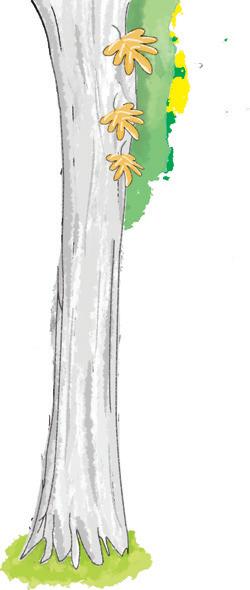























Exploration: Encourage children to explore the world around them, including plants and animals. Discuss where food comes from, how plants grow, and ways to care for the environment. Help them recognize features of different animals, birds, and insects.


Problem Solving: Develop awareness about safety among children by discussing safety precautions at home, school, and on the road through sorting activities, helping them identify potential problems and find solutions.
Critical Thinking: Promote critical thinking on global issues like water conservation through stories and class discussions led by the teacher.

















































Cultural Awareness: Introduce children to our culture and traditions by exploring various festivals and how they are celebrated.
Logical Reasoning: Develop reasoning skills by identifying differences in seasons and weather. Encourage children to sort and categorize items through riddles or sorting activities.
Classification: Help children identify different modes of transport and become familiar with everyday tools and gadgets. This builds a scientific outlook and enhances their ability to classify objects based on specific attributes.
Includes Suggested Activities for Teachers and Parents:
• Circle Time: Develop verbal communication skills and help children express their feelings and preferences.
• Games and Rhymes: Use play and songs to explore topics and build connections among classmates.
• Hygiene and Safety Tips: Provide guidance on healthy habits and hygiene practices such as washing hands, eating healthy, being active, and sleeping early. Explore safety through “what if” scenarios, asking children to predict outcomes if rules are ignored.
• Explore Nature: Discover scientific facts about water sources and uses through pictures, and discuss ways to save water to build engagement.
• Fun Activities: Engage children with an animal and bird matching game, an animal-themed ramp walk, and a collaborative insect story chain to make learning interactive and enjoyable.






My Body | Handprint Art | Keeping Clean | Colour Red Colour Yellow | My Family | Fun with Family | Magic Words
Activity 1
Objective: To encourage self-expression and increase vocabulary by sharing personal preferences.
Instructions:
Gather the children in a circle and initiate a discussion about their likes and dislikes.
Prompt each child to share their preferences by beginning their sentences with “I like...” and “I don’t like...”.
Support the conversation by suggesting various categories for their responses, such as colours, toys, people, seasons, foods, clothes, places, games, and activities.
Write down each child’s response on a sticky note.
Have the children place their sticky notes on a chart paper posted on the wall to create a visual representation of their preferences.
Activity 2
Objective: To foster teamwork and encourage children to engage in activities based on shared interests.
Instructions:
Introduce the game “Group of Friends” by asking a series of fun questions, such as: “Who likes to dance?”, “Who likes to sing?”, “Who likes to play with a ball?”, “Who likes to read books?”, “Who likes to draw and colour?”
For each question, ask the children to raise their hands to express their preferences.
Based on their responses, form groups of children who share similar interests and allow them to participate in the indicated activities.
While the children are engaged in their activities, encourage them to consider switching groups, if they wish. This provides an opportunity for them to explore different interests and interact with new friends.
Activity 3
Objective: To promote body awareness and develop listening skills.
Instructions:
Instruct the children to open the first two fingers of their right hand and choose names for each finger, such as “Bunny” and “Funny.”
Provide commands such as “Bunny, touch your nose,” “Funny, touch your toes,” “Bunny, touch your hair,” or “Funny, touch your tummy.”
The children will respond by pointing to the corresponding body part based on the name assigned to each finger.
Activity 4
Objective: To promote awareness of personal hygienic practices in a fun and engaging manner.
Instructions:
Select a group of five children to participate in this activity. Whisper a hygienic action, such as washing hands, combing hair, or brushing teeth, into one child’s ear, one action at a time. The chosen child will then act out the hygienic action for the group to guess.

Listen and understand.
Hello! I am Veni. I am 3 years old.

What is your name?

Hello! I am Raghav. I am 4 years old.


For the teacher
Do this activity in circle time. Begin by introducing yourself. Encourage the children to introduce themselves. Ensure each child gets a chance.
Pasteyour photographhere
Objectives
• Self-awareness
• Confidence building


Are you a boy or a girl? Make your thumbprint near the correct picture.


Hello, Hello, Friends
Hello, hello, friends, Come and play with me, I am unique and special, Come and see!
Objectives
• Fine motor skills • Self-awareness • Language development


Trace the circles. Try to make these faces.

Look at the situations below and paste the correct stickers.

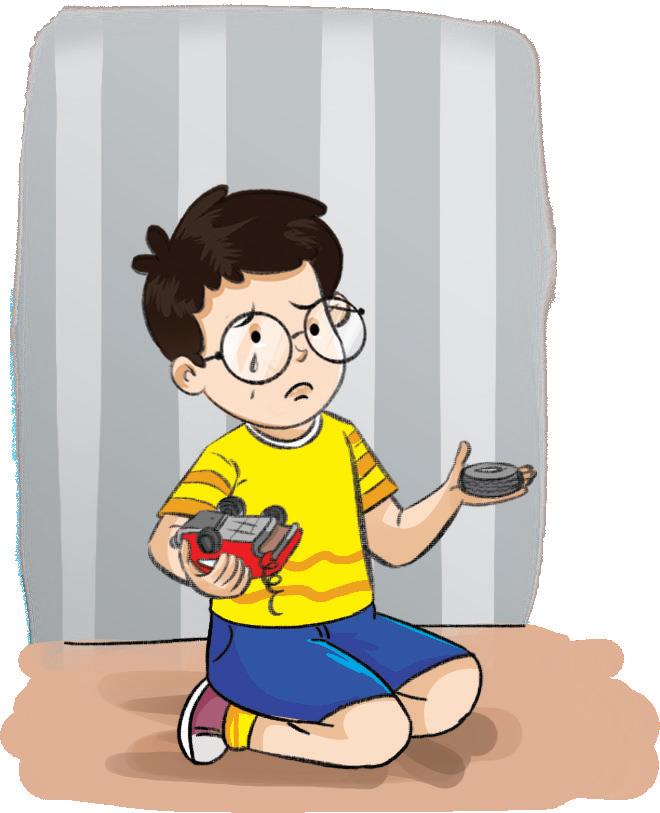

Objectives
• Thinking • Association • Observation


I have many friends. We have a lot of fun together.


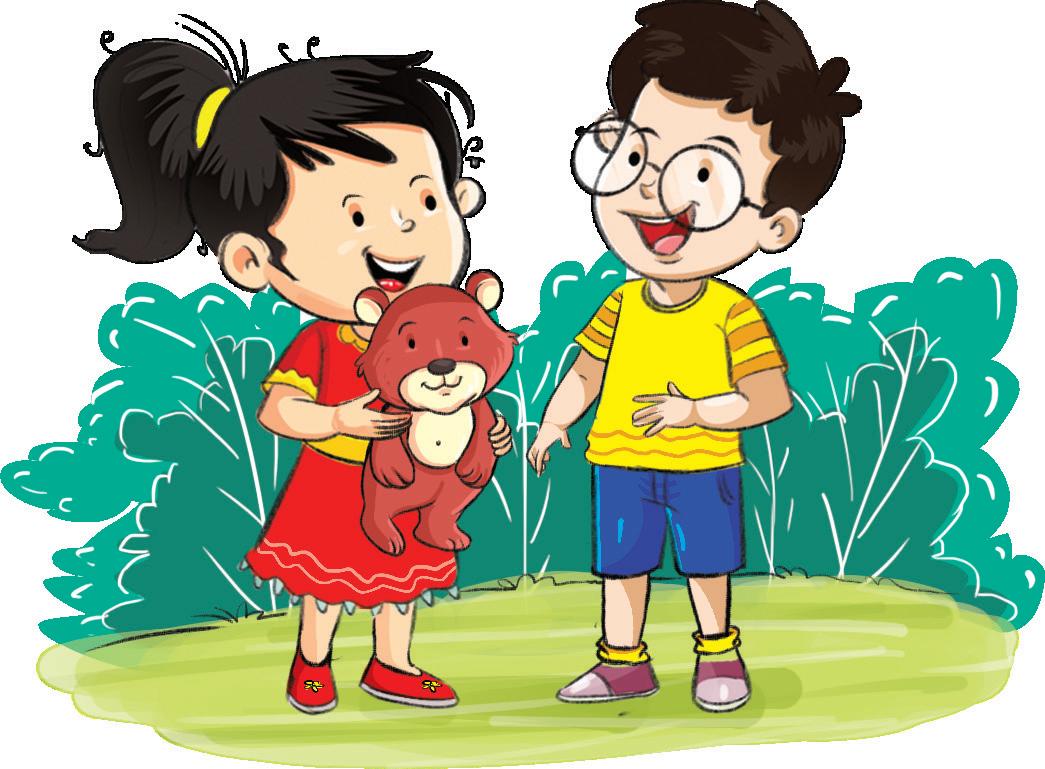



Friends are special. They make us feel happy. How do you spend time with your friends?
Objectives
• Thinking • Expression
• Social awareness • Observation



I am Dev. Say the names of my body parts.

fingers

foot leg
Objectives

toes
• Identification • Association • Observation • Recognition




Print your hand on the hen, and print your thumb on the chicks.


Two little hands go clap, clap, clap. Two little legs go tap, tap, tap.
Two little eyes to look around.
Two little ears to hear each sound.
One little nose to smell the rose.
One little mouth to eat a toast.
Objectives
• Listening • Rhythmic appreciation • Gross motor skills


Trace the dotted lines to match the body parts with the activities.






LET’S DO Do and show any two actions with each of these body parts.
• legs • hands • eyes • mouth


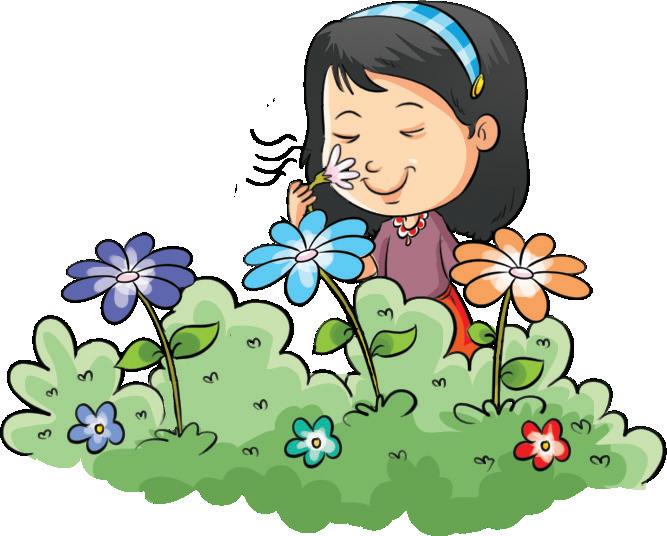



Objectives
• Association
• Fine motor skills
• Observation


This is how little teddy keeps himself clean.


I brush my teeth twice in a day.

I shampoo and comb my hair.

I wear clean and ironed clothes.



Tell Us
Name any five things you use to keep yourself clean. Also, tell us how you use them.
I use a soap to bathe daily.
I clip my nails with a nail clipper.
I wash my hands with soap before and after eating.
I use a tissue to wipe my nose.
• Understanding the importance of hygiene
• Observation Objectives



How do you keep yourself clean? Match the pictures.









Objectives
• Understanding the importance of hygiene • Observation








I am red colour. You see me in many things.



Sponge-paint the strawberry with red colour.
Objectives
• Identify the colour red • Fine motor skills





I am yellow colour. You see me in many things.


Tear and paste bits of yellow paper on the Sun.

Objectives

• Identify the colour yellow • Fine motor skills



I am Yukta. I live with my family. These are my family members.






Do you have a pet? If yes, how do you spend time with it?
• Understanding relationships Objectives
• Learning about different family members and their roles



I love my family. I help everyone. This is how we can help our family.
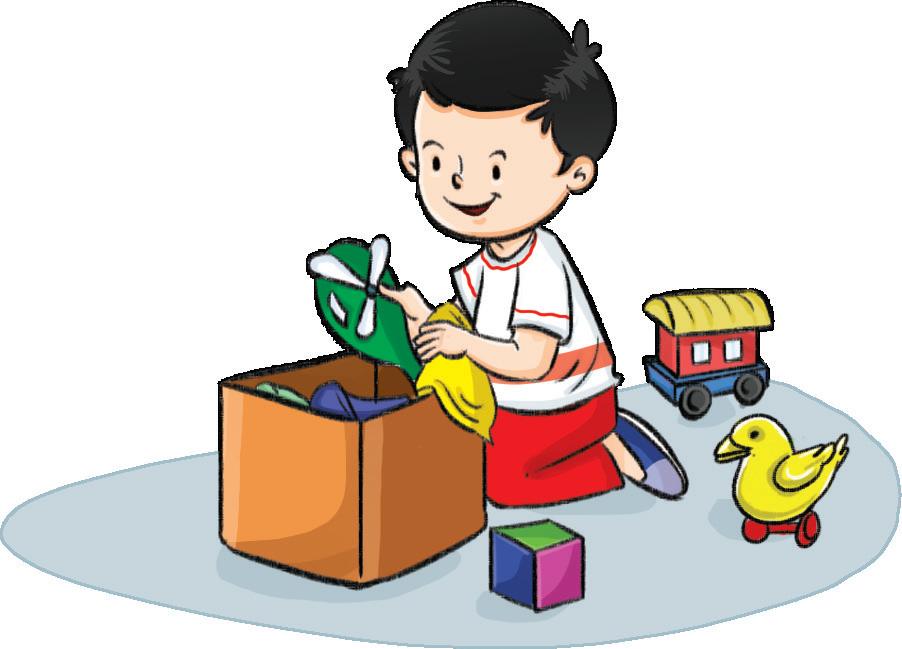


Keep the toys back after playing. Water the plants. Set the table. Help with cleaning.
Objectives
• Observation • Exploration



This is how we can have fun with our family.

Celebrate special days. Go out together.


Play together.
Objectives
• Learning about different family members and their roles
• Understanding relationships





Magic Words
“Hi” to greet, “Please” to ask, “Thank you” for every task. “Sorry” when I’ve done a wrong, These magic words make me strong.

Thank you

Please, may I use your pencil?



Objective: To promote teamwork, critical thinking, and knowledge about household activities in different rooms.
Instructions:
Divide the class into four groups and assign each a colour: blue, green, yellow, and red.
Prepare a bag of chits with statements such as: “Food is cooked in...”, “We sleep in...”, “We take a shower in...”, “We welcome guests in...”, “We brush our teeth in...”, “We keep our clothes in...”, “We wash utensils in...”, “We watch TV in...”, “We keep fruits and vegetables in...”.
Invite a child from each group to draw a chit and, read the statement aloud.
Allow the corresponding group to respond with the name of the correct room. If they answer incorrectly, pass the question to another group.
Keep a track of the correct answers on the board and award points to each group.
At the end of the activity, announce the winning team. You may commend them with a round of applause.
Objective: To improve listening skills and help children differentiate between classroom and non-classroom items through physical activity.
Instructions:
Explain the rules:
All children should stand, first.
If an item that is named in the classroom, the children should jump. If the item is not in the classroom, they should turn around.
Prepare a list of at least 10 classroom items and 10 non-classroom items, such as: notebook, writing board, chair, bag, eraser, pencil, books, desk, ruler, and stapler (classroom items). hammer, letterbox, television, bicycle, refrigerator, aeroplane, pizza, and garden tools.
Objective: To educate children about community helpers and their roles in society while encouraging collaboration and creativity.
Instructions:
Hang a large piece of chart paper on the wall at the children’s eye level.
Ask each child to bring in pictures of various community helpers, such as doctors, firefighters, teachers, police officers, and tailors. During circle time, place the chart paper in the centre and assist the children in pasting their collected pictures onto the chart. As each child pastes a picture, explain the role of that community helper. For example, you might say, “A doctor helps treat people who are sick or injured.” Once the collage is complete, display it prominently where all children can see.
Encourage children to participate by inviting them to point to a helper in the collage and share the services provided by that helper. For example, ask, “Who helps us with...?”


See, listen and repeat.


We’ll show you our house
We’ll show it to you today. We’ll show it from outside On a bright and sunny day. We’ll show you all the rooms Where we eat, sleep and play.
Objectives
• Listening • Speaking • Observation

Paste the missing parts of the picture. (Use the sticker sheet). Say their names.

How many doors and windows are there in your house?
Objectives
• Identify parts of a house • Observation • Motor skills








TELL US
Every house is different. All houses do not have all these rooms or things. Name the rooms in your house.
Objectives
• Awareness of the immediate environment
• Recognise and identify common objects



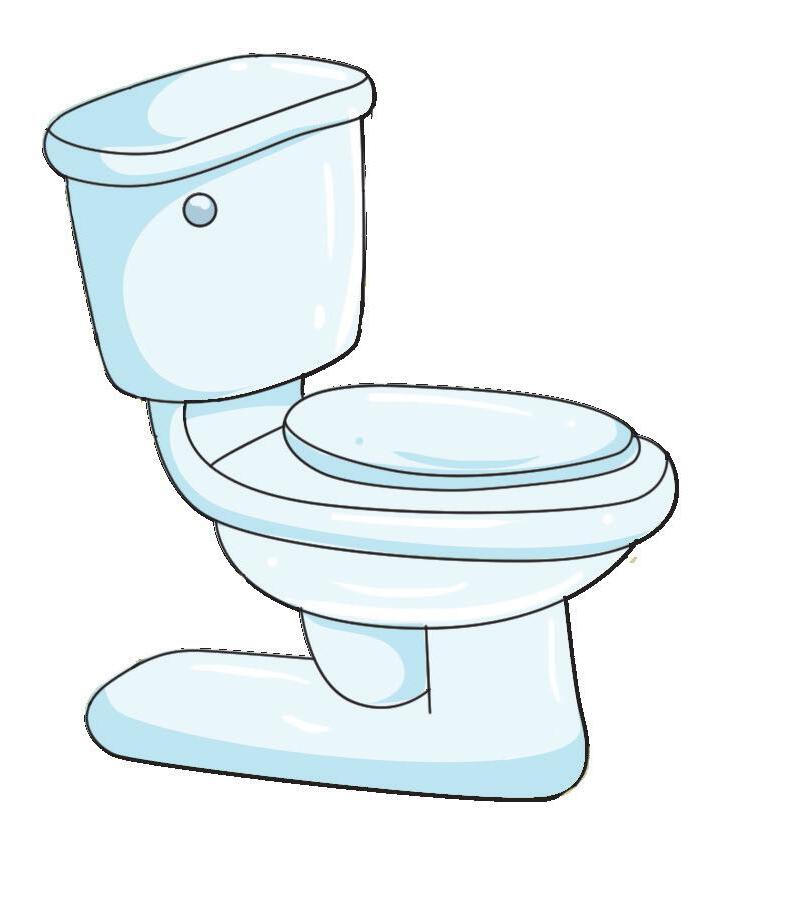


Objectives
• Recognise and identify common objects • Matching








This is my school. I learn new things in it. I have many friends. I love going to school.
We laugh and play, We jump all day. We draw. We sing. It is such a lovely thing. With friends, we share, In the field, we run.
I love my school, It is so much fun.
Objectives
• Awareness of the immediate environment
• Rhythmic appreciation

Circle the activities you do in school.




Objectives
• Observation • Recollection • Speaking





Circle the things you see in your classroom.




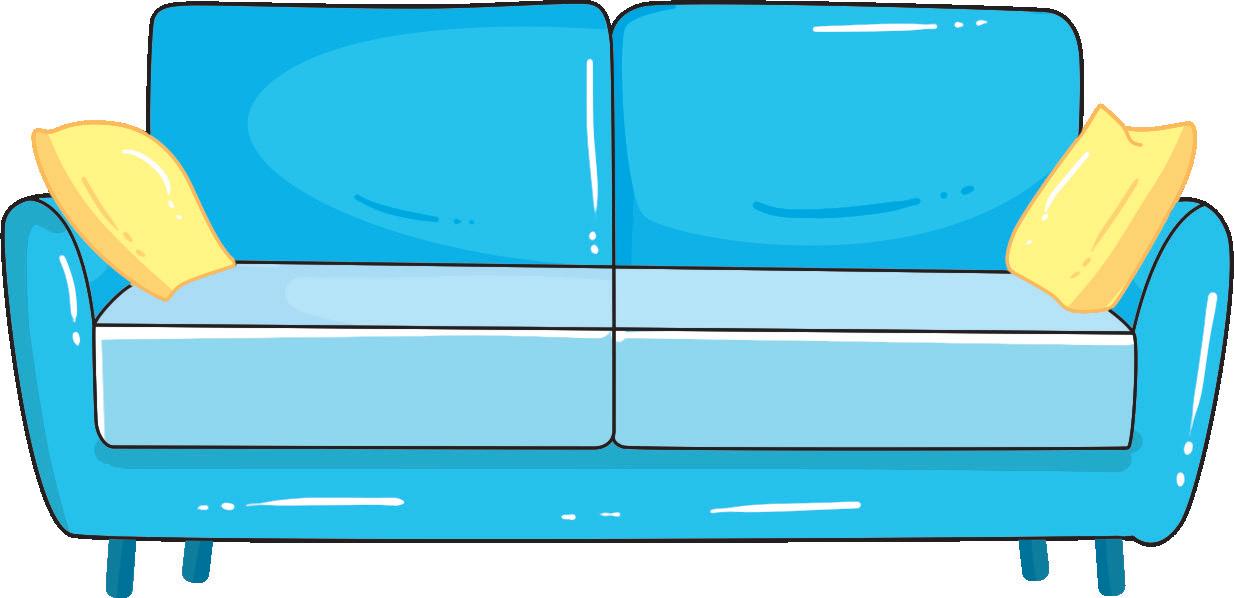

Objectives





• Awareness of the immediate environment • Recognise and identify common objects


Take me from my home to school by colouring the path. Say the names of the places you see on the way.

US
Name any four places you see on your way from home to school.



Objectives
• Observation • Recognition • Speaking • Identification
SCHOOL



Here are some people who help us. Tick () the people you have seen.


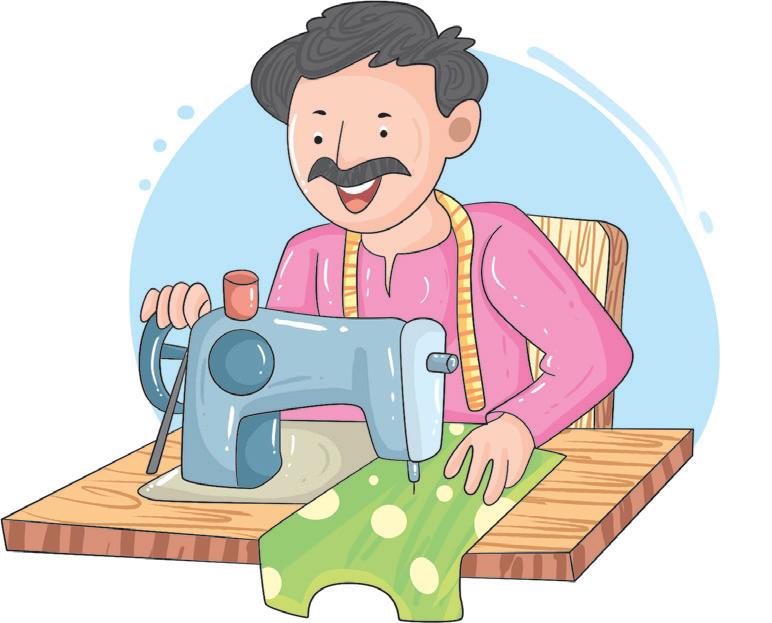










Name any three people who help you every day in school. Go and say to them, “Thank you for helping me!”



Objectives
• Awareness of community helpers and their roles
• Fine motor skills




I am blue colour. You see me in many things.


Colour the whale with blue colour.


Objectives
• Identify the colour blue • Fine motor skills













I am green colour. You see me in many things.


Colour the tree with green colour.


Objectives
• Identify the colour green • Fine motor skills


Match the pictures of the same colour.
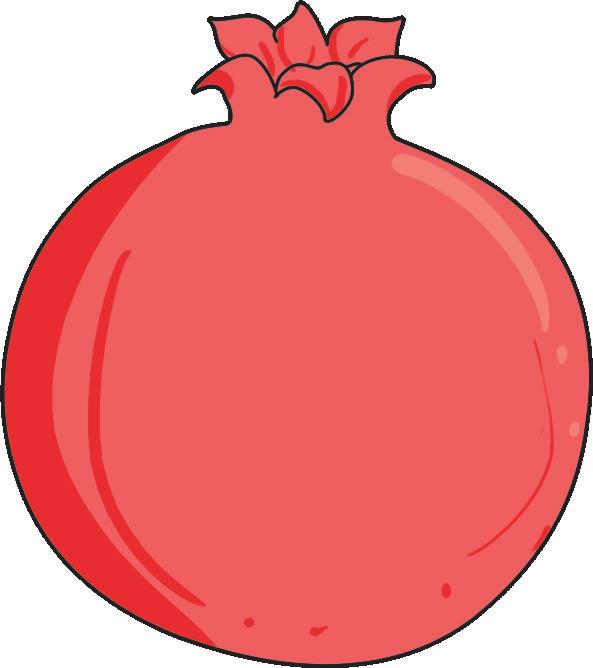


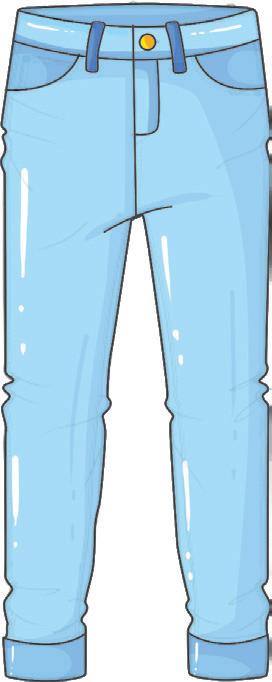




Objectives
• Identify the colours • Matching • Association

Colour the balloons in the same colour as their outlines.


Objectives
• Observation • Association • Fine motor skills



Activity 1
Objective: To encourage recognition and recalling of, and participation about, animals and birds among the children.
Instructions:
Prepare animal and bird sticks (pictures attached to ice cream sticks) for each child, including duplicates for yourself. Show a stick to the class, clearly stating the animal or bird’s name (e.g., “This is a lion.”).
Ask children to raise their hands if they have the same animal or bird stick.
Repeat the process for all sticks, allowing children to observe and match the pictures.
Activity 2
Objective: To encourage creative storytelling, collaboration, and public speaking among children about insects.
Instructions:
Prepare large cut-outs of familiar insects (e.g., grasshopper, ladybug, butterfly, bee, ant).
During circle time, place the cut-outs in the centre and start the story chain by selecting two insects. Begin a story, “One day, a grasshopper and a ladybug...”, then pass a third insect cut-out to the child next to you.
Ask them to continue the story, “What happened next with the butterfly?”
Continue the story chain, involving each child and insect cut-out, until all are included.
Offer prompts and hints for shy children, ensuring everyone participates.
Activity 3
Objective: To enhance observational skills and encourage curiosity about the natural environment through an immersive exploration.
Instructions:
Take the children on a walk around the school grounds, a nearby park, or a garden. Encourage them to observe their surroundings closely and point out interesting sights.
Distribute magnifying glasses, if possible, to help children examine insects, bark, flowers, and other natural elements up close. You may ask the class or groups of students to share the magnifying glass, ensuring everyone gets a chance to use it.
Stop at various spots along the way to discuss the children’s observations. Ask open-ended questions to stimulate critical thinking, such as:
• “What do you think this plant needs to grow?”
• “How does this leaf feel?”
After the walk, gather the children in a circle to share their findings and experiences. If the children collected some items during the walk, allow them to sort these items, create a collage, or use them for a craft project, fostering creativity and hands-on learning.


See, listen and enjoy.
Tikku looks at himself in the mirror.
I have grown. Now, I can go out by myself.

Of course! You can go out on your own now! You are a big rat.

Bye Tikku! Take care of yourself and come back before dark.

Mummy and papa, I am grown now. I want to go and see more things.

Just be careful. Don’t go very far.
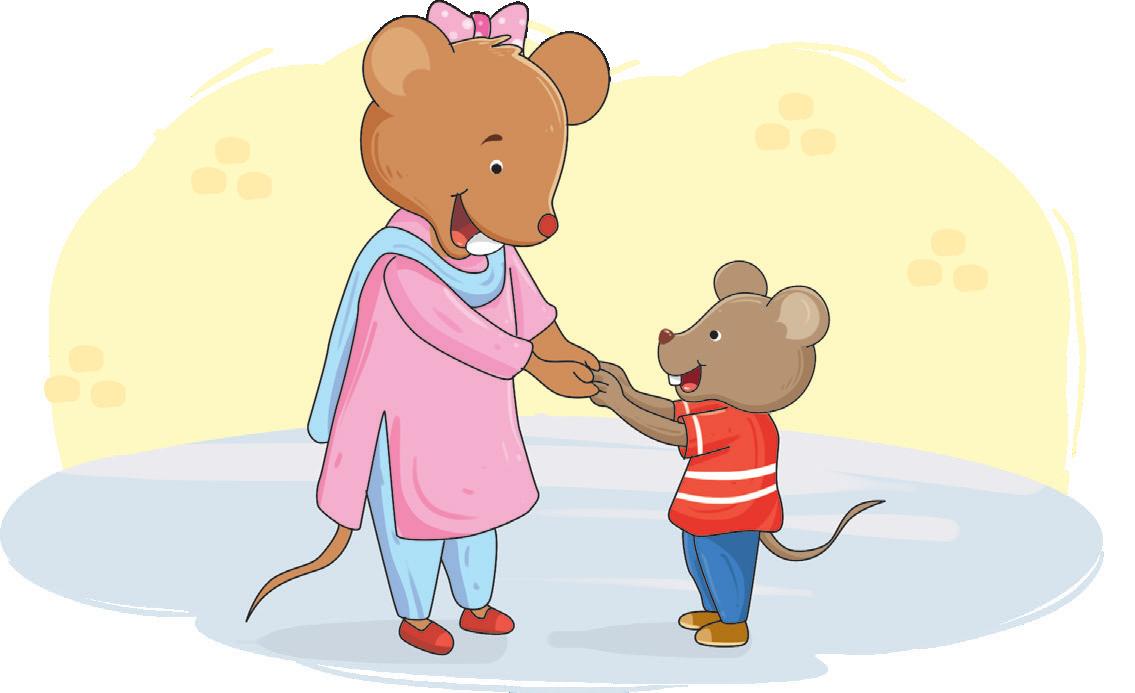

Bye mummy and papa! Don’t worry about me. I will be back soon.



Tikku comes out of his hole. He looks around. He can see many animals. Tell Tikku their names.







Say the names of the animals in the picture. Which animal will you like to keep at home as a pet?


Objectives
• Identify animals in our surroundings

Paste stickers of animals that live around us. Say their names.



Objectives
• Identify animals in our surroundings • Matching

Match the animals which are the same.







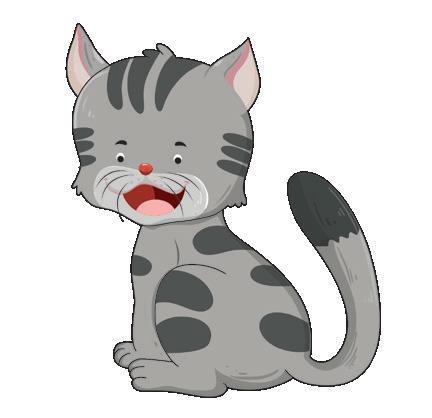




Objectives
• Identify animals in our surroundings
• Matching






Tikku reaches a jungle. He sees many animals there. Some of them are very big. Tell Tikku their names.
Which animals have stripes on their bodies?
Objectives
• Identify animals in the wild
• Observation



Objectives
• Identification • Fine motor skills




Tikku is in a garden now. He sees many birds there. Tell Tikku their names.

TELL US
Name the bird that spreads its tail, feathers and dances.
Objectives
• Identify the birds in our surroundings



Trace the path to match the same birds.




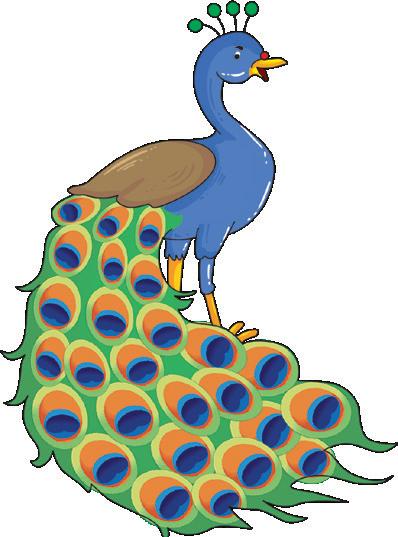

Objectives
• Fine motor skill • General awareness









Tikku sees many insects in the garden. Tell Tikku their names.





TELL US
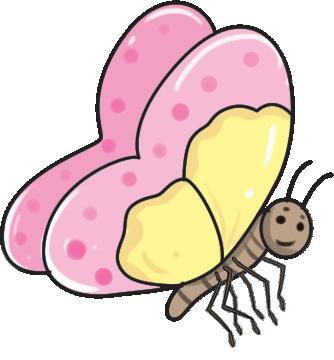






What do we use to keep ourselves safe from mosquito bites?
Objectives
• Identify the insects in our surroundings



Take the insects to the jar by drawing lines.








LET’S DO





Name the insect that is red with black spots on its body.

Encourage the children to point at each picture and say its name. Assist them to do the activity.
Objectives
• Identify insects
• Sorting

Trace and colour the insects.



Tikku sees many plants in the garden. Most of them have the same parts. Tell Tikku the names of the parts of this plant.

Green, green leaves
Up in the tree, Waving, swaying, Happily.
Green, green leaves
Up in the tree, Bringing joy
To you and me!

Go to a garden with your parent/s and observe the plants there. Talk about their parts. See the different types of leaves that different plants have.
Objectives
• Identify plants in our surroundings
• Exploration

Paste pictures of different parts of a plant (use the sticker sheet).



Objectives
• Identify plants in our surroundings
• Exploration


Activity 1
Objective: To encourage socialisation, creativity, and confidence among children while talking about fruits and vegetables.
Instructions:
Give each child a badge featuring a familiar fruit or vegetable (e.g., apple, carrot, banana, spinach).
Pin the badges on their shirts and explain the activity.
Form pairs and have them imagine themselves as their assigned fruit or vegetable. Each child introduces themselves, stating their name and the fruit/vegetable, e.g., “Hello, I’m Priya. I’m a strawberry; I’m a fruit.”
They then ask their partner, “Who are you?” and listen to their introduction.
Ensure every pair takes turns introducing each other, fostering a fun and interactive atmosphere.
Activity 2
Objective: To encourage children to recognize and adopt good habits, while promoting critical thinking and public speaking about good habits.
Instructions:
Prepare a list of 15–20 good habits, such as washing hands, correctly disposing garbage, brushing teeth, drinking water or milk, reading books, exercising, getting enough sleep, putting things in their proper place, etc.
Act out one good habit at a time, without speaking in front of the class.
Allow children to observe, and guess the name of the habit.
Activity 3
Objective: To encourage critical thinking, safety awareness, and responsible decision-making among children.
Instructions:
During circle time, present “what if” safety scenarios, such as: “What if you touch a hot stove?”, “What if you go to the park alone?”, “What if you cycle on the main road?”
Ask children to predict what might happen if safety rules are not followed. Encourage responses, acknowledge each answer, and provide clear explanations.


Fruits are healthy and tasty. Say the names of these fruits.









Which is your favourite fruit? What colour is it?

Objectives
• Identify common fruits


Say the names of these fruits. Circle the fruit which is big in each set.






Objectives
• Recognition
• Observation
• Visual discrimination




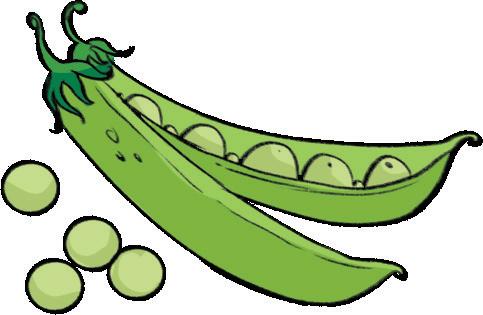







Which is your favourite vegetable?
Can you eat it without cooking?
Objectives
• Personal preference • Observation


Circle only the vegetables.












Objectives
• Recognition • Observation • Sorting











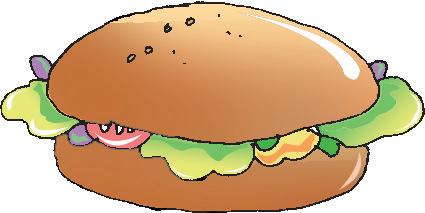




What do you bring in your tiffin to school?
Objectives
• Health awareness • Association
• Observation



See, listen and enjoy.


Rohan is playing a video game. It is late at night.
Next day, Rohan does not want to wake up. He is very sleepy.
Rohan! Go to sleep.
Rohan keeps yawning in school. He is sleepy.


Rohan goes to sleep in class.

The teacher goes to Rohan and wakes him up.
Sorry sir! I will sleep early from today.

Do you sleep early at night and wake up early in the morning?
It is a good habit to sleep early at night. Our body gets rest when we sleep well.
Objectives
• Self-awareness • Discipline

Sleeping early, eating healthy food and being clean are good habits. Let us see some more good habits.

I always wash fruits before eating them.

I never waste food.

I brush my teeth twice a day.
Objectives
• Learning simple health and hygiene practices
I wash my hands before and after eating.
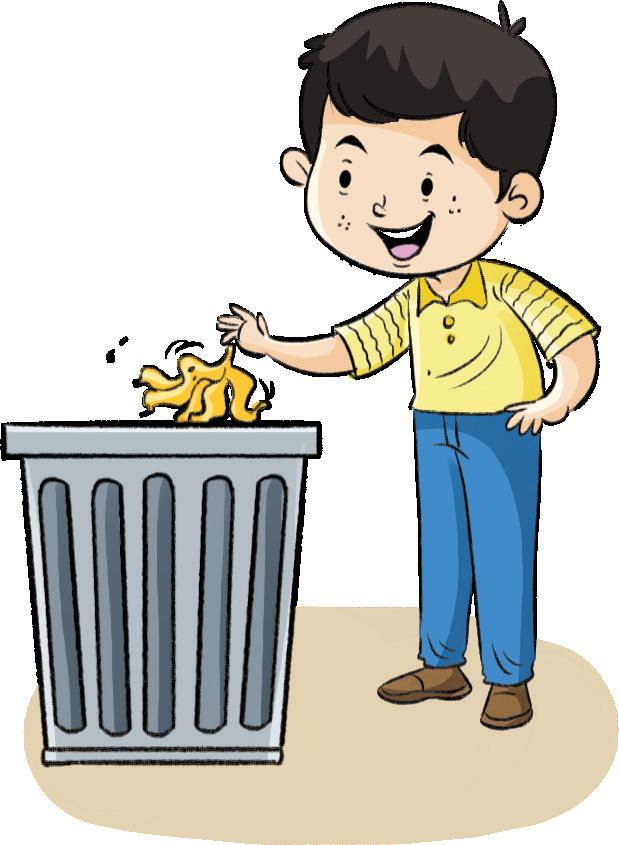
I throw waste in a bin.
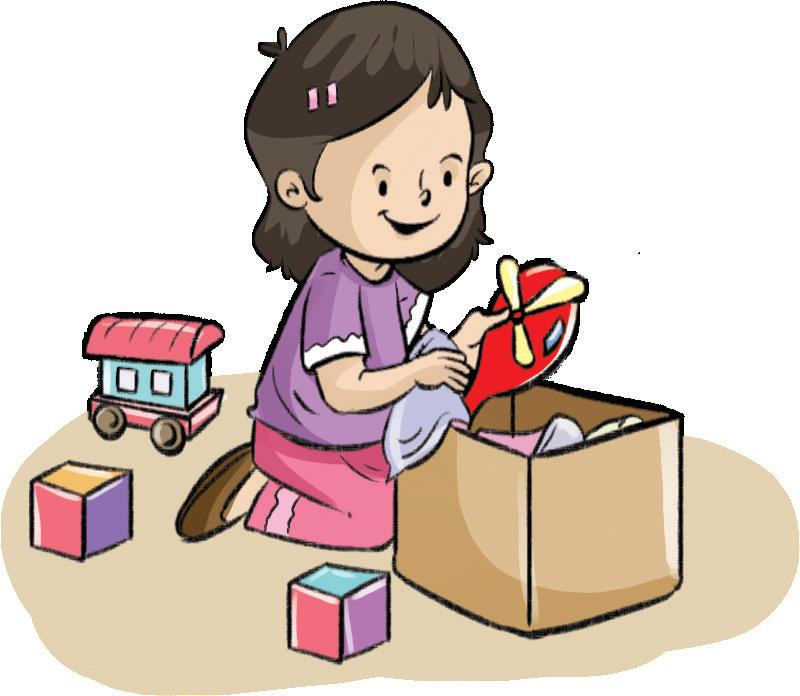
I keep my things in place.


It is a good habit to be polite.
Wish and greet people when you meet them.
Hello!

Good morning!

Say ‘Thank you’ when someone gives you something or helps you.

Thank you! Thank you!

Say ‘I am sorry!’ when you make a mistake or hurt someone.
I am sorry!

TELL US
When do we say ‘Excuse me!’?
Say ‘Please!’ when you want something.
Please, may I play with you?

Objectives
• Life skills
• Social awareness



Tick () the actions that keep you safe at school.

Climbing up the stairs carefully and in a line

Waiting for your turn

Sitting quietly in the class
Objectives
• Learning about basic safety rules at school

Running up or down the stairs

Pushing others in a queue
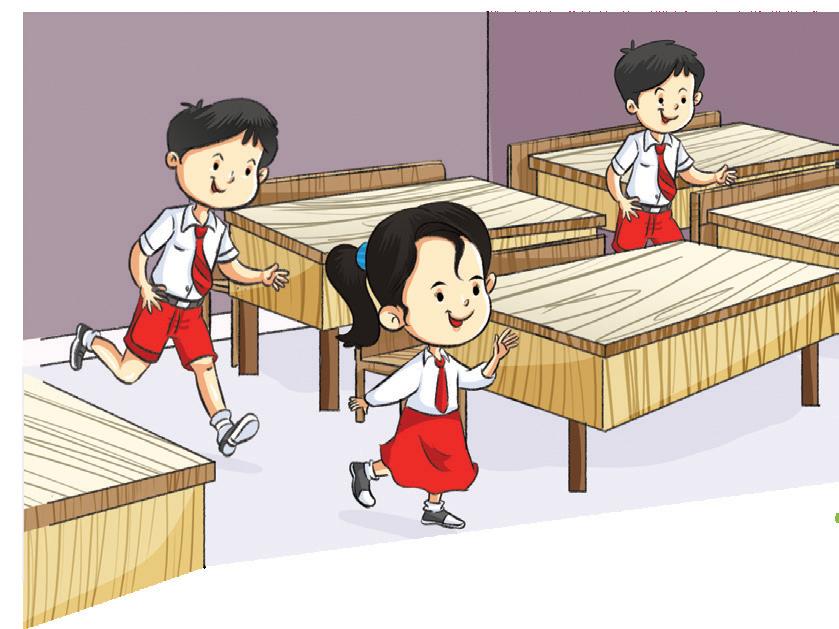
Running around in the class
• Developing a basic understanding of social roles and responsibilities



Circle the actions that keep you safe on the road.

Go out alone
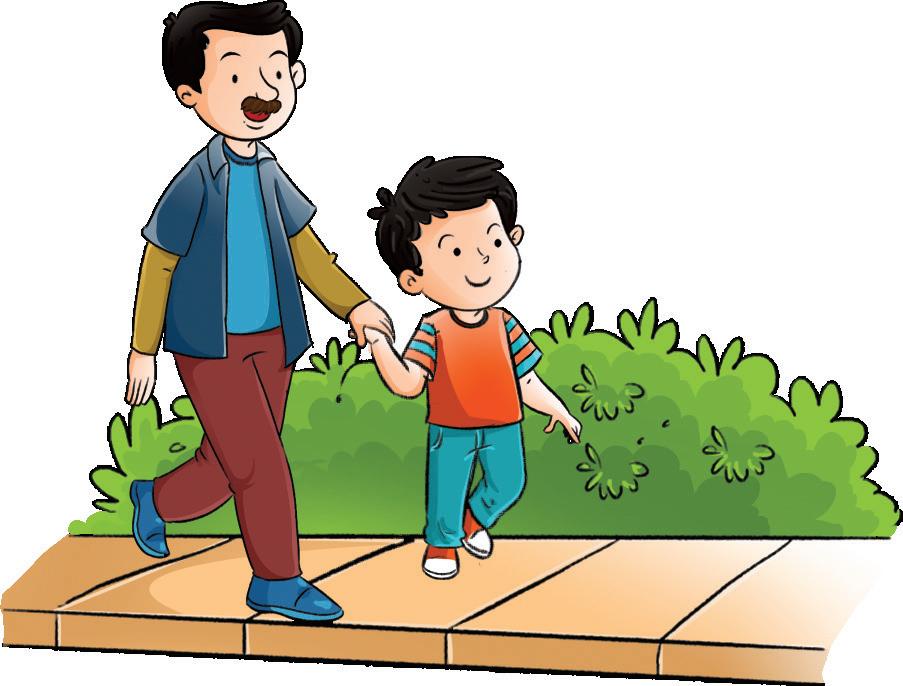
Walk on the footpath

Wait for your turn

Run on the road
Why should we not put our head or hand out of the window when sitting in a bus, car or train?
Objectives
• Learning about basic road safety rules
• Developing a basic understanding of social roles and responsibilities





US
Is it safe to open the door without asking who it is?



Objectives
• Importance of seeking help from trusted adults
• Safety awareness


Activity 1
Objective: To raise awareness about the various uses of water in daily life and encourage appreciation for this resource.
Instructions:
Prepare a list of everyday activities where water is used such as drinking, washing (utensils, clothes, hands, etc), bathing, watering plants, cooking food, mopping the house, providing water for pets, etc.
Gather pictures or images illustrating these activities. You may draw them on chart papers as well.
Divide the children into pairs and show each pair a picture and ask questions like, “What is happening in this picture?”; “How is water being used here?”
Encourage responses, appreciate correct answers, and discuss the importance of water in each situation.
Activity 2
Objective: To encourage children to take ownership of water conservation and develop habits to save water.
Instructons:
Discuss various ways to save water, such as:
- Turning off taps when washing hands with soap or brushing teeth
- Storing rainwater for watering plants
- Reusing water from washing fruits and vegetables
- Bathing pets in open ground to let the soil absorb the water
- Taking care to turn of taps before buckets and utensils overflow
Ask each child to bring a picture of themselves performing a water-saving activity.
Assist children in pasting their pictures onto chart paper, creating a “Water Heroes” collage.
Display the chart paper on the activity wall as a reminder of their responsibility to save water and protect the planet.
Activity 3
Objective: To encourage children to make a personal commitment to saving water.
Instructions:
Prepare a “We Will Save Each Drop of Water” pledge board.
Give each child a palm-sized water droplet cut-out.
Have them colour the droplet blue and write their name on it.
Assist children in pasting their droplets on the pledge board.
Ensure each child takes the pledge on the board after adding their droplet.


See, listen and enjoy.


Kamya’s cat needs a bath. It is not going in the tub. Kamya has an idea. She puts a toy mouse in the tub.
The cat jumps into the tub and has a good bath.


Kamya uses a hair dryer to dry her cat.
Her cat is clean now.

Objectives
• Listening • Observation • Concentration



We use water for many things. See the pictures and talk about the uses of water.

drinking

bathing

washing utensils

brushing teeth

cooking
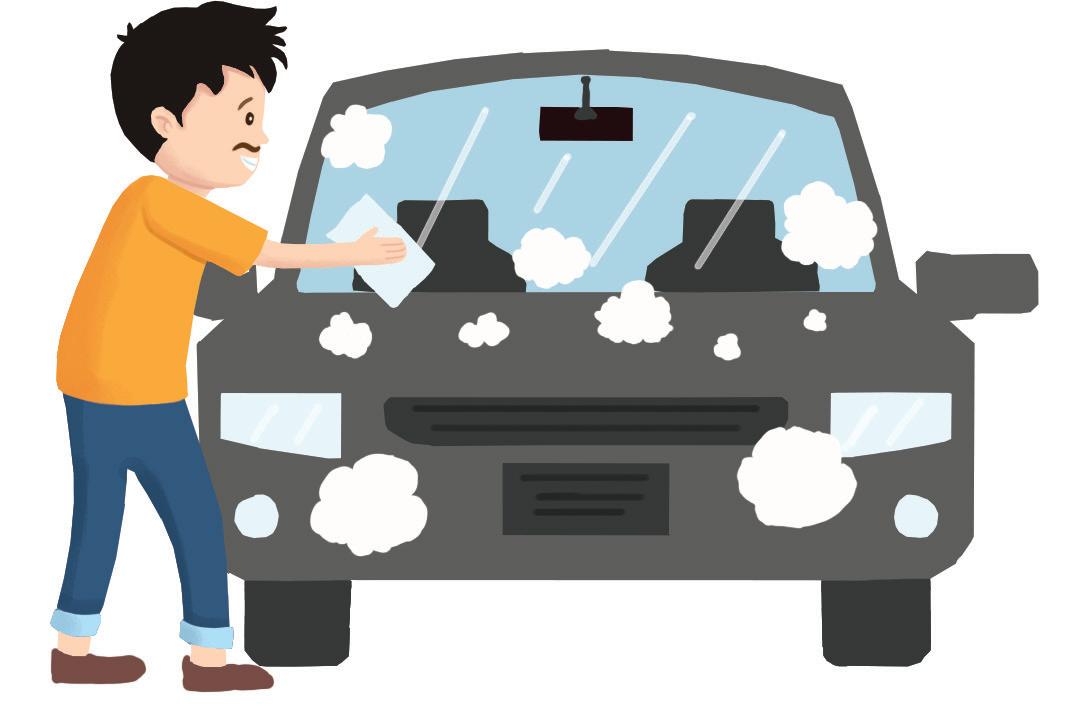
cleaning cars

swimming
Objectives
• Environmental awareness • Observation


Colour the pictures.




Water is very precious. We must not waste it. Tick () the pictures that show how we can save water.

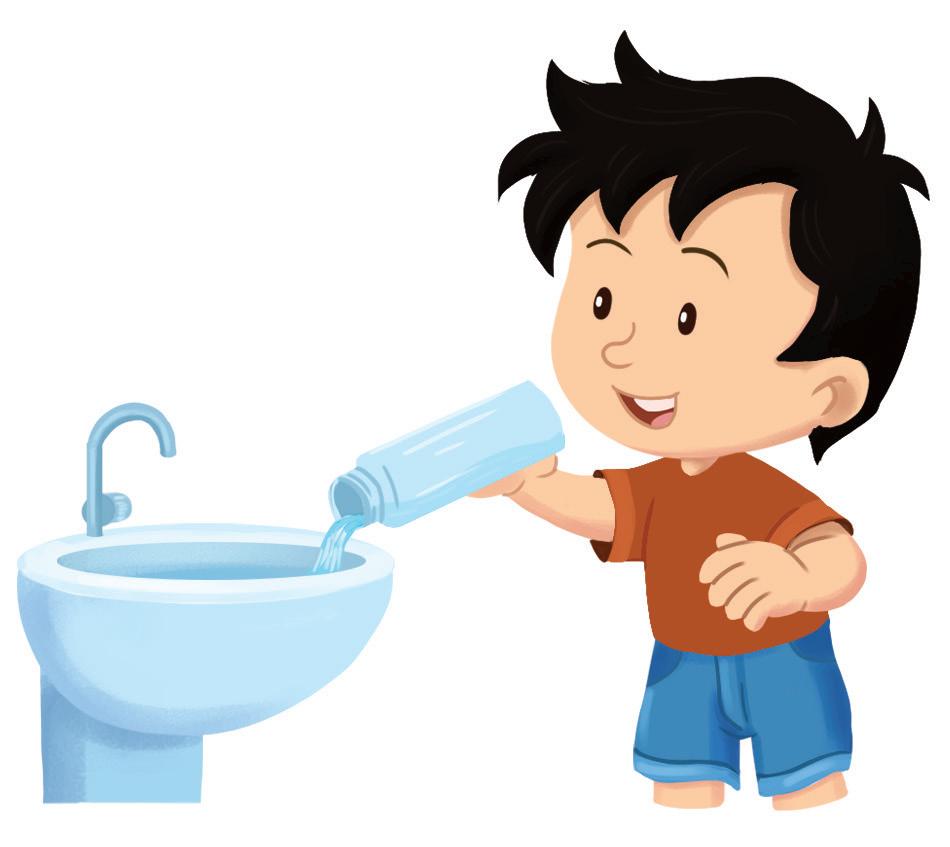




Objectives
• Environmental awareness • Observation • Unserstanding conservation of water


Activity 1
Objective: To encourage creativity, and socialisation, among children; and foster seasonal knowledge ad awareness about the summer season.
Instructions:
Distribute white t-shirt cut-outs to each child.
Divide children into groups of four and provide them with coloured pictures of fruits (watermelon, mango, grapes, cherries).
Have them paste a chosen fruit onto their t-shirt cut-out.
Ask each child to name their favourite food.
Discuss the importance of wearing t-shirts during the summer for comfort and protection. Encourage children to share their favorite summer fruits.
Objective: To encourage creativity and socialisation, among children; and foster knowledge and awareness about the rainy season through storytelling.
Instructions:
Sing a rhyme on rainy day. Or tell children a story on a rainy day.
Ask questions like the following to encourage sharing of rainy-day experiences:
- “What’s your favorite thing to do on a rainy day?”
- “Have you ever jumped in a big puddle?”
- “Does a rainy day make you happy? Why”
Activity 3
Objective: To develop categorisation skills, seasonal awareness about winter, and encourage active participation among children.
Instructions:
Prepare winter and summer item cut-outs.
Divide a chart paper into two sections: “Winter” and “Summer”.
During circle time, randomly select children to choose an item and place it under the correct season. Provide positive reinforcement and appreciation for their contributions.



See, listen and enjoy.
The sun is hiding behind the clouds.

The sun comes out from behind the clouds.
Thank you, dear sun!


I do. I am playing hide-and-seek with you.
Come out and play with us!
The sun goes back behind the clouds.
Why have you gone back? Don’t you want to play with us?


Objectives
• Listening • Observation • Concentration
The birds are happy now. They play hide-and-seek with the sun.


See the picture of a hot day and talk about it.


Do you like to go out when it is a hot day and the sun is shining brightly in the sky?

Circle the activities that you like to do on a hot day.






Objectives
• Exploring weather • Observation • Association


See the picture of a cold day and talk about it.
TELL US
Do you like to come out of a blanket on a cold day?



Circle the clothes that we wear on a cold day.






Objectives

• Exploring weather • Observation • Association


See the picture of a rainy day and talk about it.



It’s raining. Colour to complete the picture.

Objectives
• Exploring weather • Observation • Fine motor skills

Trace the lines to match the pictures.



Objectives
• Association • Observation • Fine motor skills





What kind of clothes do you like to wear on a hot day, rainy day and cold day? Match the clothes with the correct weather.





Objectives
• Matching and Sorting • Association • Identification





Activity 1
Objective: To foster cultural awareness, encourage sharing, and develop communication skills among children. Instructions:
Share the story of Ramayana during circle time, highlighting Diwali’s significance. Ask children to share about their Diwali celebrations at home. Use hints like, ‘flower decorations’, ‘rangoli’, ‘diyas’, ‘new clothes’, and ‘sweets’.
Encourage active listening and respect for diverse traditions.
Activity 2
Objective: To encourage creativity, self-expression, and festive cheer among children.
Instructions:
Talk to the children about Santa Claus. Tell them about the tradition of wishing for a gift from Santa. Provide each child with a small card and sometime to think about their wishes. Assist children in drawing their wishes on the cards, offering guidance as needed. Encourage creativity while decorating the cards with materials like: glitter, stickers, markers and colour pencils.
Activity 3
Objective: To foster cultural understanding, encourage generosity, and promote community bonding among children. Instructions:
Invite children to wear traditional attire (white for boys, colourful for girls).
Ask them to bring: gifts to exchange with friends; and food to share during lunch. Explain the significance of Eid and its values, i.e., giving and sharing; and gratitude and prayer. Gather children for meal sharing.
Activity 4
Objective: To introduce Guru Nanak Dev’s principles to children and encourage them to reflect on their application in everyday life.
Instructions:
Show a picture of Guru Nanak Dev and share his teachings:
- Honesty and truthfulness
- Equality and brotherhood
- Avoiding negative feelings and harmful influences
- Unity and oneness with God
A visit to a Gurdwara can be planned.



See the picture of Diwali and colour/decorate the diya.
Objectives
• Awareness • Observation



See the picture of Christmas. Circle the gift you would like to get on this day.

Objectives
• Awareness • Observation



See the picture of Eid and repeat the rhyme after your teacher.
With many stars bright.
‘Eid Mubarak!’ Is what we say. It is such a happy day!

Objectives
• Awareness • Observation


See the picture of Gurpurab. Colour in the children’s dresses.
Objectives
• Awareness • Observation



Activity 1
Objective: To foster teamwork, communication, and coordination among children.
Instructions:
Draw a floor track with arrows indicating turns.
Divide children into groups of 10, forming a human train:
- 1 engine (leader)
- 9 bogies (followers)
Have them hold each other by the waist and navigate the track, following the arrows.
Add train sound effects and music for ambiance.
Repeat with another group, encouraging teamwork and communication.
Activity 2
Objective: To encourage creativity, critical thinking, and storytelling skills among children.
Instructions:
During circle time, display cut-outs of familiar gadgets used in daily life, such as mobile phones, table clocks, torches, and table lamps.
Explain the purpose and functionality of each gadget, relating them to real-life scenarios. For example:
- Demonstrate making a call on a mobile phone and speaking to someone on the other end.
- Show how the hour and minute hands move on a table clock to tell time.
Choose two gadget cut-outs, such as a torch and a table lamp, and start a story: “Once upon a time, a torch and a table lamp went for a walk at night after dinner...”
Pause the story and ask a child to continue it by adding what happens next. For example: “What did the torch and table lamp see on their walk?”
Continue this storytelling chain, inviting each child to contribute to the narrative by adding their own ideas and gadget interactions.
Encourage creativity and imagination as the story unfolds.
Ensure the gadgets are familiar and relatable to the age group.

The alarm rings. Papa bear wakes up. Then, he goes to get ready.

Mummy bear makes toast and milkshake for his breakfast.

Your breakfast is ready.

Objectives
• Recognise and name common gadgets


Papa picks up his laptop and hugs baby bear while going out.
Good morning, my dear boy! I am going to office. I will see you in the evening.

Papa bear sits in his car. Baby bear comes out to say bye to him.
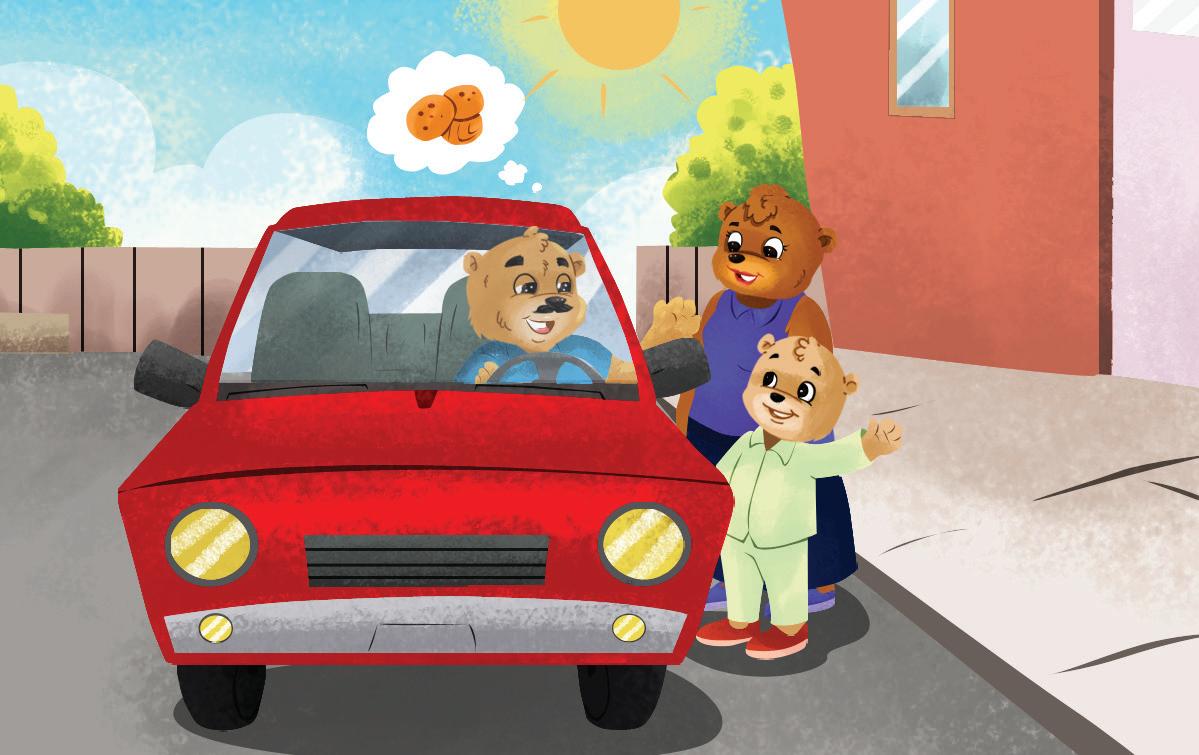
Bye, dear. Yes, I will. And that too with your favourite honey cookies!
Bye papa! Please be back soon.


We use tools and gadgets every day to make our lives easier. Say the names of the pictures below.



earphones


Objectives





• Observation • Recognise and name common gadgets




Listen to the riddles carefully. Then, circle the correct gadget.
I ring when someone wants to talk to you.

You use me to see the time.
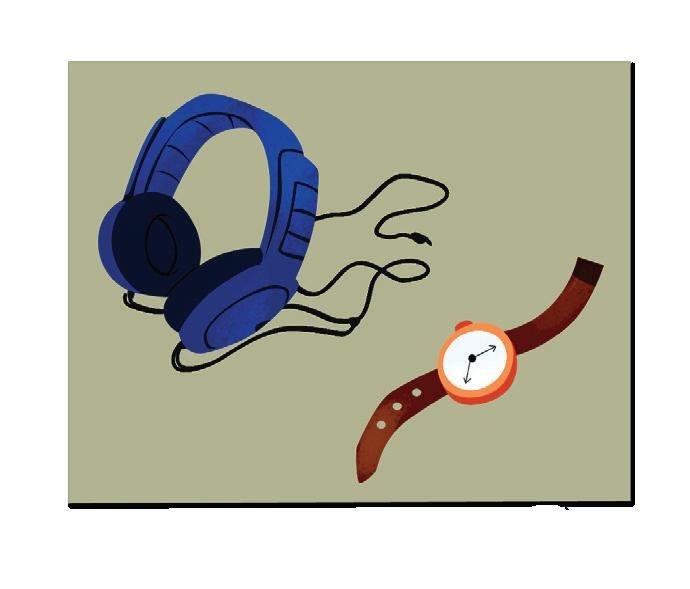
You use me to dry your hair.

Objectives
• Listening • Observation • Identification
I remove wrinkles from your clothes.

You use me to click pictures.

I make crisp toasts for you.



We use different vehicles to go from one place to another. See the picture. Say the names of the vehicles that you have seen.




Objectives
• Recognise and name common vehicles • Observation

Draw and colour the missing wheels of these vehicles. Say their names.


Objectives
• Observation
• Fine motor skills




Trace and colour the vehicles. Say their names.




Page No. 4


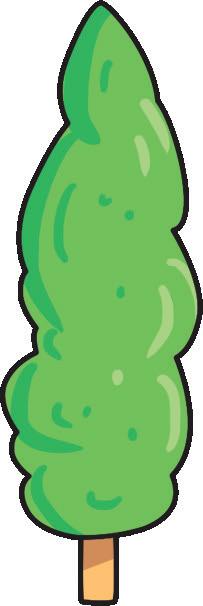


Page No. 19 Page No. 37



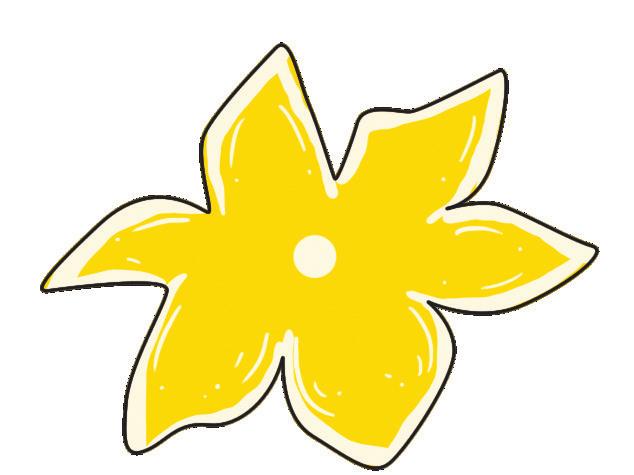

No. 47


































DAWN is a comprehensive, NCF 2022-based Early Childhood Education program that lays a solid foundation for lifelong well-being and holistic growth, encompassing physical, cognitive, and socio-emotional development.
This General Awareness coursebook is specifically designed to help learners build awareness about themselves, their immediate surroundings and the world around them.
Additional Resources
• Flash Cards
• Sticker Sheets
• Suggested Activities List, for teacher and parents
• Teacher's Manual
• Digital Resouces
• Assessment Sheets and Holistic Progress Card
• Play-based learning activities, which promote holistic development of the child in all ECE domains
• School readiness, which is assured in the curriculum and learning design
• All-round development, in areas of physical, cognitive, cultural and socio-emotional domains
• Teacher assets, like assessment tools and lesson plans to help maximise program quality and outcomes
Uolo partners with K-12 schools to provide technology-enabled learning programs. We believe that pedagogy and technology must come together to deliver scalable learning experiences that generate measurable outcomes. Uolo is trusted by over 15,000+ schools across India, Southeast Asia and the Middle East.
ISBN 978-81-980546-2-3
